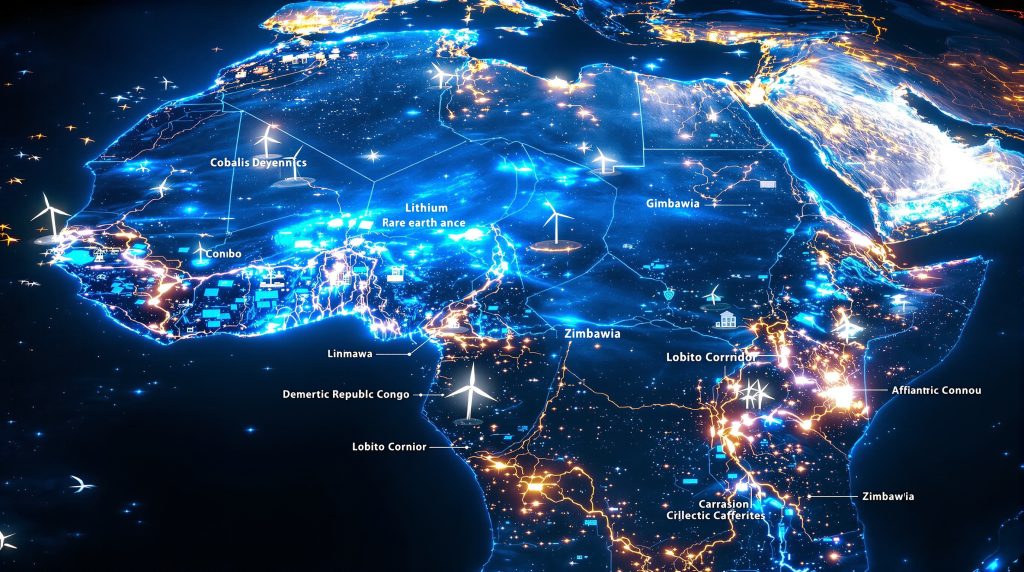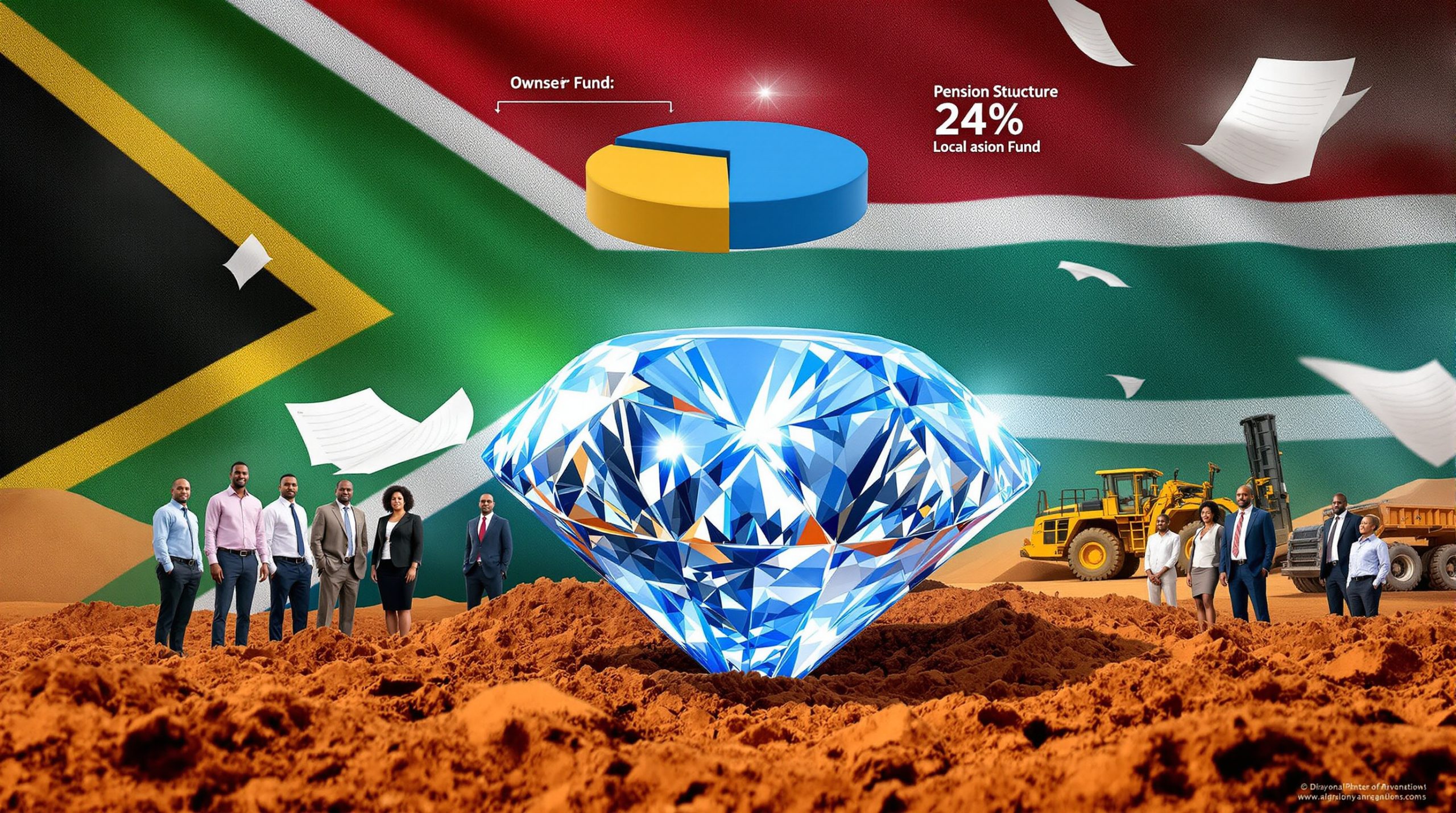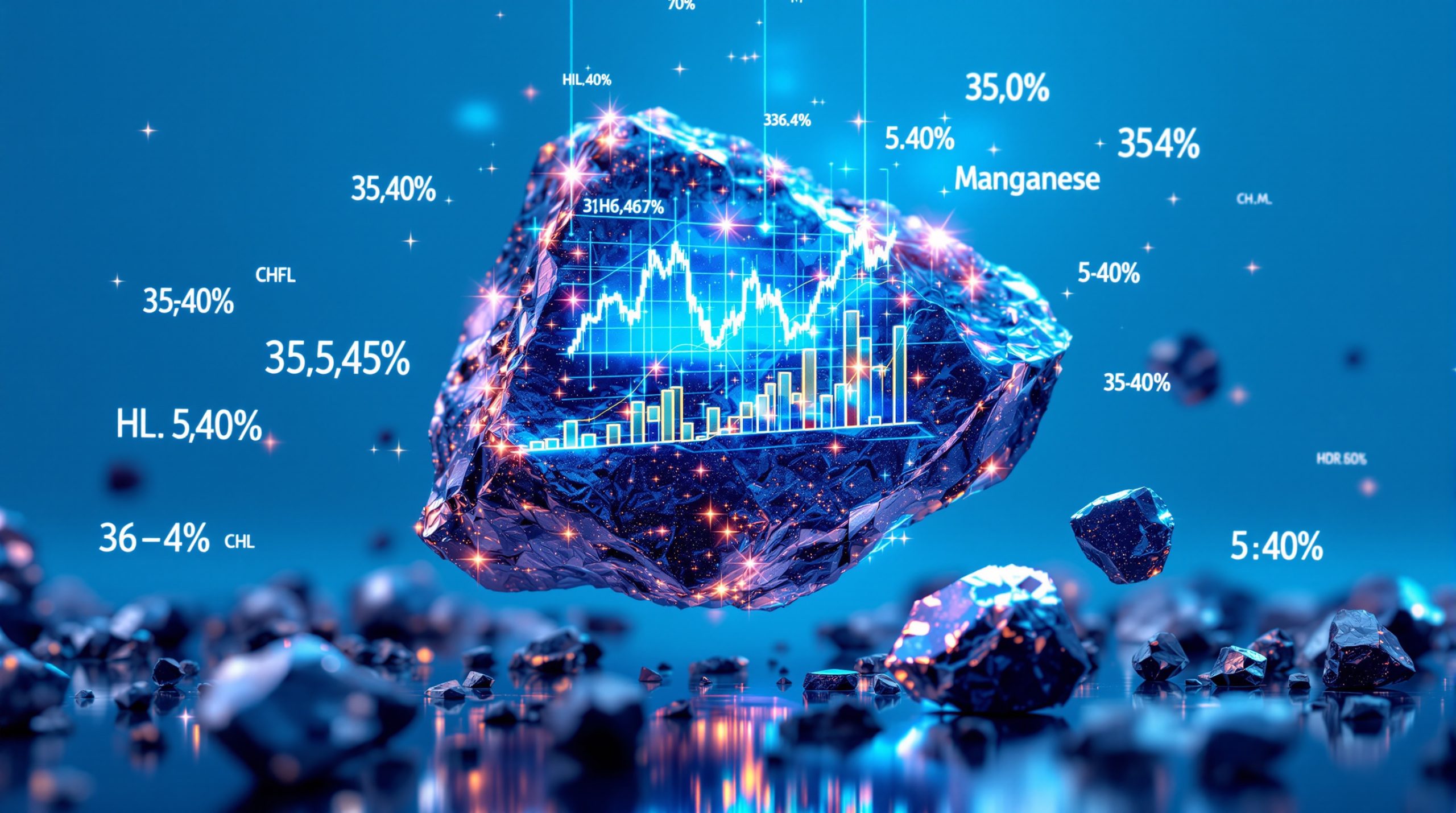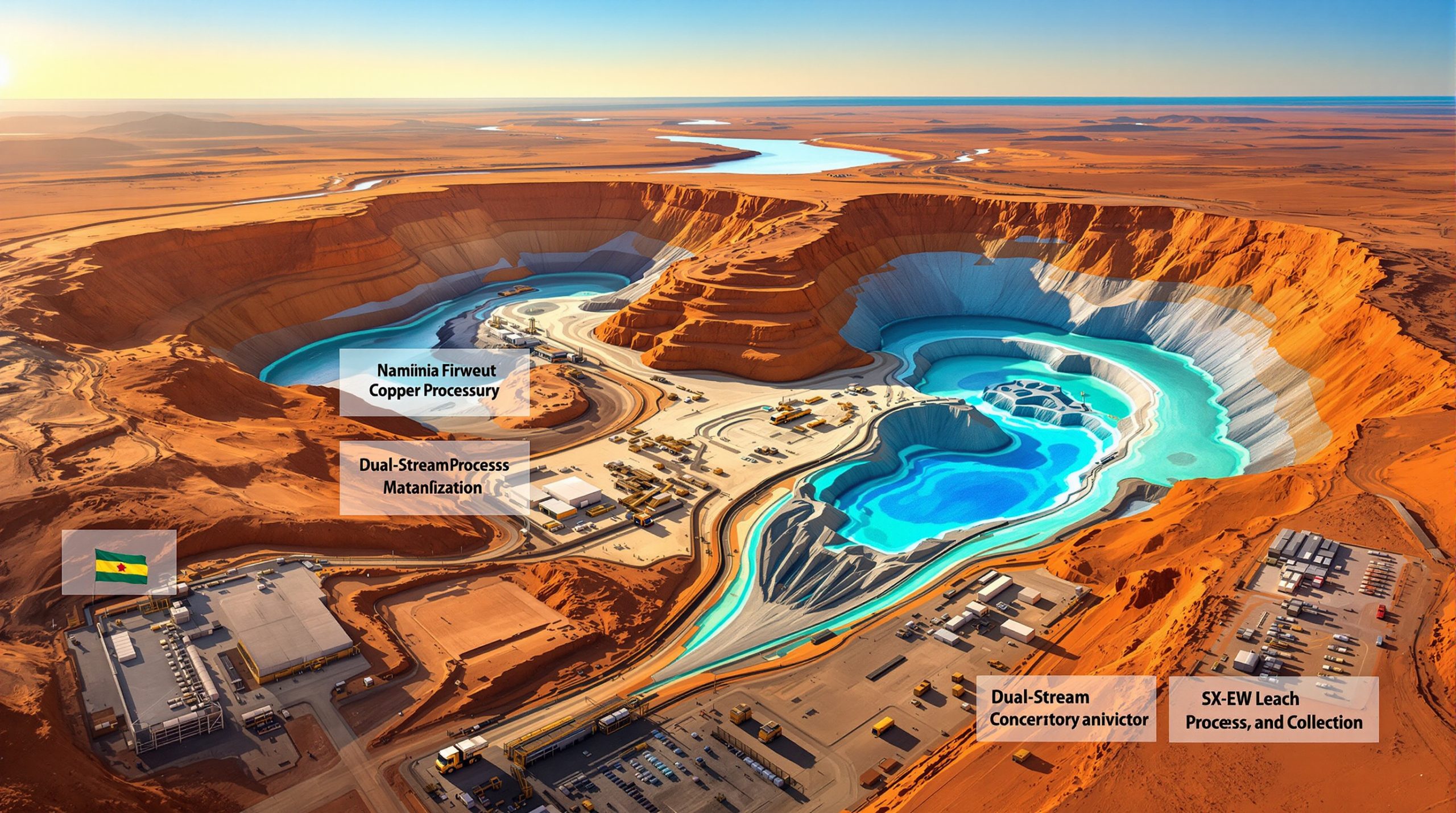Africa's Strategic Position in the Green Technology Mineral Revolution
Africa is emerging as a pivotal player in the global green technology revolution, holding approximately 30% of the world's mineral reserves essential for low-carbon technologies. These natural resources form the backbone of solar power systems, electric vehicles, battery storage solutions, green hydrogen production, and geothermal energy infrastructure. As global demand for clean energy technologies accelerates, African nations are positioned at a critical crossroads where strategic resource management could transform continental economies.
The scale of opportunity is substantial—the Mo Ibrahim Foundation projects that production of key minerals including lithium, graphite, and cobalt will need to increase by nearly 500% by 2050 to meet global clean energy demands. This unprecedented growth trajectory presents both immense opportunities and complex challenges for African countries seeking to maximize the benefits from their natural resource endowments.
Which Critical Minerals Make Africa Essential to Green Technology?
Battery Revolution Minerals
The continent holds a commanding position in several minerals that are foundational to modern battery technologies:
Cobalt: The Democratic Republic of Congo (DRC) dominates global cobalt production, accounting for approximately 70% of worldwide supply. This mineral is critical for enhancing battery stability and performance in electric vehicles and grid storage systems.
Lithium: Emerging production hubs in Zimbabwe, Ghana, Mali, and Namibia are positioning Africa as an increasingly important source of this essential battery component. Zimbabwe alone holds some of the world's largest hard rock lithium deposits, with grades exceeding 4% in certain locations.
Graphite: Mozambique and Madagascar host world-class graphite deposits, with Mozambique's Balama mine representing one of the largest natural graphite reserves globally. These resources are crucial for anode materials in lithium-ion batteries.
Manganese: South Africa controls approximately 80% of the world's known manganese resources, a critical element used in battery cathodes to improve energy density and recharging capabilities.
Renewable Infrastructure Minerals
Beyond battery components, Africa holds significant deposits of minerals essential for broader renewable energy infrastructure:
Copper: The DRC and Zambia possess some of the world's richest copper deposits, with the Central African Copperbelt extending across both countries. This highly conductive metal is indispensable for solar panels, wind turbines, and electrical transmission infrastructure.
Platinum Group Metals: South Africa holds more than 70% of global platinum reserves and is the world's largest producer. These metals are essential catalysts for hydrogen fuel cells and electrolyzers—key technologies for the emerging hydrogen economy.
Rare Earth Elements: Various countries across the continent have promising rare earth deposits, crucial for permanent magnets used in wind turbine generators and electric vehicle motors.
Bauxite/Aluminum: Guinea holds approximately 25% of global bauxite reserves, the primary source of aluminum used in lightweight components for solar panel frames and electrical infrastructure.
How Are African Nations Transforming Raw Materials into Economic Value?
The traditional model of extracting and exporting raw materials has historically limited Africa's economic benefits from its natural resources. This extractive approach has created a persistent pattern where the continent captures only a small fraction of the final value of its minerals—typically less than 10% according to UNECA estimates.
At the 2025 African Climate Summit in Addis Ababa, continental leaders emphasized the urgent need for a paradigm shift toward green industrialization built on local processing and manufacturing. Claver Gatete, Executive Secretary of the United Nations Economic Commission for Africa (UNECA), articulated this vision: "We cannot repeat the exploitation patterns of the past. Africa must industrialize using its own resources."
This transition from raw material supplier to processor and manufacturer requires substantial policy reforms, strategic investments, and technological capacity building. Several African nations are already implementing strategic approaches:
- Export restrictions on raw materials to encourage domestic processing
- Tax incentives for companies that establish processing facilities
- Skills development programs focused on technical expertise needed for processing
- Special economic zones dedicated to mineral processing and manufacturing
- Joint ventures with international partners that include technology transfer components
The economic case for local value addition is compelling. Processing cobalt into battery-grade materials can increase its value by 5-15 times, while converting lithium into battery-grade chemicals can multiply its value by 6-10 times. These value multipliers translate directly into increased revenue, employment opportunities, and economic diversification.
What Regional Cooperation Frameworks Are Driving Mineral Development?
African nations are increasingly recognizing that regional integration offers a more effective approach to mineral development than individual national strategies. Several key initiatives are advancing this continental approach:
The UNECA-Afreximbank Battery and Electric Vehicle Initiative
This groundbreaking program launched in the DRC and Zambia aims to develop an integrated battery and electric vehicle value chain. Key components include:
- Creation of special economic zones dedicated to manufacturing components for electric batteries
- Development of regional standards and certification systems
- Joint research and development programs
- Shared infrastructure investments
- Coordinated regulatory frameworks to attract investment
African Continental Free Trade Area (AfCFTA)
The AfCFTA provides a crucial framework for building regional value chains by:
- Reducing tariffs on intermediate goods crossing borders (targeting 90% tariff elimination)
- Harmonizing standards and regulations across member states
- Facilitating investment in cross-border infrastructure
- Creating a larger market of 1.3 billion people to achieve economies of scale
- Enabling freer movement of skilled labor and technical expertise
Future African Critical Minerals Alliance
UNECA is advancing this alliance with the objective of creating a unified approach to critical minerals energy transition. Strategic priorities include:
- Developing a common continental strategy for critical minerals
- Coordinating policies to maximize value retention
- Sharing best practices in governance and environmental management
- Strengthening collective bargaining power with international partners
- Pooling technical resources and expertise
These regional frameworks recognize that individual African countries often lack the market size, technical capacity, or capital to develop complete value chains independently. By creating larger integrated markets and coordinating policies, African nations can overcome these limitations and develop more competitive and resilient mineral sectors.
Which Countries Are Leading Africa's Green Mineral Revolution?
DRC: Cobalt Capital Transforming Its Approach
The Democratic Republic of Congo is taking unprecedented steps to assert greater control over its strategic cobalt resources:
- Export quota systems: The government has implemented strict export quotas to regulate market supply and prevent price volatility.
- Enforcement mechanisms: New policies include permanent bans for exporters who breach established quotas.
- Revenue accountability: Authorities are addressing significant revenue underreporting, estimated at $16.8 billion in recent years.
- Domestic processing requirements: Mining licenses increasingly include obligations for in-country processing.
- Strategic partnerships: Joint ventures with processing companies aim to move up the value chain.
These measures reflect a fundamental shift in approach—from maximizing extraction volume to maximizing economic value and sustainability.
Zambia-DRC Corridor: Creating a Battery Belt
The strategic Lobito Corridor development connecting Angola, DRC, and Zambia represents one of the most ambitious regional value chain initiatives:
- The $3.5 billion corridor will connect copper and cobalt mining regions to Atlantic ports
- Processing hubs are being established along the route to transform raw materials
- Technical training centers are being developed to build local capacity
- Renewable energy installations will power processing facilities
- Special economic zones will attract manufacturing investments
This integrated approach combines infrastructure development, industrial policy, and skills development to create a complete battery materials value chain.
Other Strategic Players
Zimbabwe's Lithium Strategy: Zimbabwe has implemented a ban on raw lithium exports to encourage domestic processing. This policy has already attracted over $700 million in investment commitments for processing facilities.
Namibia's Critical Minerals Approach: Namibia is positioning itself as a processing hub for rare earth elements and lithium, leveraging its stable political environment, existing infrastructure, and access to seaports.
South Africa's Hydrogen Valley: South Africa is developing a Hydrogen Valley that integrates its platinum resources with renewable energy to become a global green hydrogen leader.
East African Graphite Development: Tanzania and Mozambique are coordinating policies to develop graphite processing capacity, rather than competing as raw material suppliers.
What Challenges Must Africa Overcome to Maximize Green Mineral Benefits?
Despite the enormous potential, several significant challenges must be addressed for Africa to fully benefit from its green mineral resources:
Environmental Sustainability Concerns
The extraction and processing of critical minerals can have substantial environmental impacts:
- Water usage: Battery-grade lithium production can require up to 500,000 gallons of water per ton
- Land degradation: Open-pit mining operations can disturb ecosystems and biodiversity
- Energy requirements: Processing facilities demand significant power, often in regions with limited electricity access
- Chemical management: Processing operations use various chemicals that require careful handling and disposal
- Carbon footprint: Traditional processing methods can be highly carbon-intensive
Leading mining companies and African governments are increasingly adopting more sustainable practices, including water recycling systems, renewable energy integration, and rehabilitation programs. However, implementing these solutions requires substantial investment and technical expertise.
Social and Governance Issues
Successful development of green mineral value chains requires addressing:
- Community rights and benefits: Ensuring local communities share in economic benefits through employment, procurement, and community development funds
- Transparency in revenue management: Implementing systems like the Extractive Industries Transparency Initiative (EITI) to ensure public benefit from resource revenues
- Labor standards: Establishing and enforcing safety and fair labor practices throughout the value chain
- Artisanal and small-scale mining integration: Creating formalization pathways for the estimated 10 million Africans engaged in artisanal mining
Countries like Ghana and Sierra Leone have developed community benefit-sharing frameworks that could serve as models for other nations. These approaches typically include mandatory local content requirements, community development agreements, and transparent revenue allocation mechanisms.
Technical and Financial Barriers
Building processing capacity faces several obstacles:
- High capital requirements: A mid-sized lithium processing facility can cost $400-700 million
- Technical expertise gaps: Specialized metallurgical skills are often scarce in mining regions
- Energy infrastructure limitations: Processing operations require reliable, affordable electricity
- Logistics challenges: Transportation infrastructure is often inadequate for moving processed materials
- Market access hurdles: Penetrating established global supply chains requires meeting stringent quality standards
These barriers can be addressed through strategic partnerships, targeted infrastructure investments, and skills development programs. Development finance institutions and export credit agencies are increasingly supporting such initiatives, recognizing their alignment with climate and development goals.
How Is Technology Revolutionizing African Mineral Production?
Technological innovation is transforming how Africa's role in green tech minerals are explored, extracted, and processed:
Digital Transformation in Exploration and Production
Advanced technologies are enhancing mineral exploration and production efficiency:
- Remote sensing and AI-powered analysis: Identifying promising deposits with greater accuracy and less environmental disruption
- Predictive maintenance systems: Reducing downtime and extending equipment life
- Autonomous equipment: Improving safety and productivity in mining operations
- Blockchain-enabled traceability: Ensuring ethical sourcing throughout supply chains
- Digital twins: Creating virtual models of operations to optimize processes
These technologies can help African producers overcome traditional disadvantages and compete more effectively in global markets. Companies like Glencore in the DRC have reported 15-20% productivity improvements through digital technology implementation.
Processing Innovations
Technological breakthroughs are making mineral processing more efficient and environmentally friendly:
- Direct lithium extraction: New technologies reduce water consumption by up to 70% compared to traditional evaporation methods
- Hydrometallurgical processing: Lower-impact methods for extracting and refining minerals
- Dry stacking tailings management: Reducing water usage and contamination risks
- Renewable energy integration: Powering processing operations with solar, wind, and hydropower
- Modular processing facilities: Scalable solutions that can grow with market demand
Several African countries are establishing innovation hubs focused on mineral processing technologies. Namibia's Lithium Research Institute and South Africa's Center for Hydrometallurgy are developing Africa-specific solutions that address the continent's unique challenges and opportunities.
Skills Development and Technology Transfer
For technology adoption to succeed, Africa must build local technical capacity:
- Technical education partnerships between universities and mining companies
- Technology transfer requirements in mining contracts
- Regional centers of excellence in mineral processing
- International research collaborations focused on critical minerals
- Diaspora engagement programs to tap expertise of African professionals worldwide
What Investment Strategies Are Funding Africa's Mineral Development?
The scale of investment required for Africa to move up the green mineral value chain is substantial—estimated at $30-50 billion over the next decade for processing capacity alone. Several innovative financing approaches are emerging:
Public-Private Partnership Models
Strategic partnerships between governments, private companies, and development institutions are creating viable investment frameworks:
- Risk-sharing structures: Governments provide land, infrastructure, and fiscal incentives while private partners bring capital and expertise
- Anchor customer agreements: Securing offtake commitments from major technology companies to reduce market risk
- Integrated investment packages: Combining mining licenses with processing obligations and infrastructure development
- Technical assistance components: Including capacity building and skills transfer in investment agreements
- Environmental and social governance standards: Ensuring investments meet sustainability criteria
The African Development Bank's $2 billion Critical Minerals Facility exemplifies this approach, providing concessional financing for projects that include processing components and meet stringent environmental standards.
Sovereign Wealth Funds and Resource Revenue Management
Several African nations are establishing mechanisms to strategically manage and invest mineral revenues:
- Botswana's Pula Fund: A model sovereign wealth fund that invests diamond revenues in diversification and future generations
- Ghana's Minerals Development Fund: Allocating mining revenues to specific development priorities
- Nigeria's Sovereign Investment Authority: Investing oil revenues in strategic infrastructure and future generations
- Rwanda's Agaciro Development Fund: Building financial independence through strategic investment of mineral revenues
These mechanisms can help countries avoid the "resource curse" and ensure that temporary resource booms create lasting economic benefits. By investing a portion of current revenues in processing infrastructure, countries can capture greater value in the future.
Creative Financing Structures
Innovative financial instruments are helping to overcome traditional barriers to investment:
- Green bonds: Raising capital specifically for environmentally sustainable processing facilities
- Project finance with completion guarantees: Reducing risk for early-stage investments
- Resource-for-infrastructure swaps: Exchanging mineral access for processing facilities and infrastructure
- Blended finance: Combining public and private capital with different risk appetites and return requirements
- Equipment leasing and vendor financing: Reducing upfront capital requirements for processing equipment
These approaches can make investments viable that would otherwise struggle to attract traditional financing. The investment strategy 2025 of the African Export-Import Bank's $3 billion facility for critical minerals value chains uses several of these innovative approaches to mobilize investment in processing capacity.
What Does the Future Hold for Africa in the Green Technology Supply Chain?
The coming decade will likely see Africa transition from primarily exporting raw materials to becoming an increasingly important player in processing and manufacturing green technologies:
Emerging Regional Manufacturing Hubs
By 2030, several specialized manufacturing clusters could emerge across the continent:
- Battery Materials Belt: DRC-Zambia-Angola corridor becoming a major hub for battery precursor materials
- Rare Earths Processing Center: Namibia and South Africa developing specialized rare earths separation capabilities
- Green Steel Complex: South Africa leveraging its iron ore with green hydrogen to produce low-carbon steel
- Solar Manufacturing Ecosystem: North African nations developing integrated solar component manufacturing
- Critical Component Suppliers: Specialized producers forming around major automotive and electronics manufacturers
These hubs would create high-value jobs, technology spillovers, and economic diversification beyond the traditional extractive model.
Circular Economy Opportunities
Africa's growing involvement in green technology minerals also creates opportunities in recycling and the circular economy:
- Urban mining: Recovering valuable minerals from electronic waste and spent batteries
- Battery refurbishment: Creating second-life applications for EV batteries in grid storage
- Remanufacturing facilities: Restoring used components to like-new condition
- Recovery from mining waste: Extracting valuable minerals from historical tailings and waste rock
- Closed-loop systems: Creating zero-waste manufacturing processes
These circular approaches can provide additional economic value while reducing environmental impacts. Ghana's e-waste recycling initiative demonstrates how formal recycling systems can create employment while recovering valuable materials.
Climate Resilience Considerations
As Africa develops its mineral value chains, climate resilience must be integrated into planning:
- Water-efficient processing technologies: Critical in water-stressed regions
- Climate-adaptive infrastructure design: Accounting for changing weather patterns
- Distributed renewable energy systems: Reducing vulnerability to grid failures
- Diversified transportation networks: Building redundancy to withstand disruptions
- Ecosystem-based adaptation: Maintaining natural buffers against climate impacts
By proactively addressing climate risks, African nations can develop more resilient mineral value chains that can withstand increasing climate variability and extreme events.
Continental Coordination Through the African Union
The African Union's African Mining Vision provides a framework for coordinated development of the continent's mineral resources. Implementation priorities include:
- Harmonized policies and standards for critical minerals
- Coordinated infrastructure development along strategic corridors
- Common approaches to resource governance and transparency
- Joint research and development programs
- Unified positions in international negotiations related to critical minerals
This continental approach can maximize Africa's collective bargaining power and ensure more equitable distribution of benefits across mineral-rich and mineral-poor countries.
FAQs About Africa's Role in Green Technology Minerals
What percentage of key green technology minerals does Africa hold?
Africa possesses approximately 30% of the world's mineral reserves essential for low-carbon technologies. This includes over 70% of global cobalt production, approximately 80% of the world's platinum group metals, and significant deposits of graphite, manganese, bauxite, and lithium. According to the African Mining Market, these resources are becoming increasingly strategic as global demand for clean energy technologies accelerates.
How are African nations ensuring communities benefit from mineral wealth?
Several approaches are being implemented across the continent:
- Mandatory local content requirements: Policies requiring specific percentages of local employment, procurement, and ownership
- Community development agreements: Legally binding contracts detailing benefits for affected communities
- Revenue sharing mechanisms: Direct allocation of mineral revenues to local governments and communities
- Skills development programs: Training local residents for technical and management positions
- Infrastructure co-use arrangements: Ensuring mining infrastructure also serves community needs
Ghana's Minerals Development Fund allocates 20% of mineral royalties to mining communities for local development projects, while Sierra Leone requires mining companies to commit 1% of annual turnover to community development.
What processing technologies are being implemented across the continent?
African countries are implementing various mineral processing technologies:
- Hydrometallurgical processing: Chemical-based extraction methods for cobalt and copper in the DRC and Zambia
- Spodumene conversion: Converting hard-rock lithium into battery-grade lithium carbonate in Zimbabwe
- Alumina refining: Processing bauxite into alumina in Guinea through the Simandou project
- Graphite purification: Producing battery-grade graphite in Mozambique and Madagascar
- Platinum smelting and refining: Producing pure platinum group metals in South Africa
These technologies represent significant progress from simple concentration to higher-value refined products. Zimbabwe's Bikita lithium processing facility, for example, is producing 99.5% pure lithium carbonate suitable for battery manufacturing.
How is the African Continental Free Trade Area supporting mineral development?
The AfCFTA facilitates mineral value chain development through:
- Tariff reduction: Eliminating duties on 90% of goods, including minerals and processed materials
- Non-tariff barrier elimination: Streamlining customs procedures and regulatory compliance
- Service market liberalization: Opening markets for mining services and technology providers
- Investment protocol: Creating a more predictable environment for cross-border investments
- Digital trade framework: Supporting digital solutions for mineral traceability and trade
By creating a unified market of 1.3 billion people and harmonizing regulations, the AfCFTA enables economies of scale in processing and manufacturing that would be impossible within individual national markets.
What environmental safeguards are being implemented in mining operations?
Environmental protection measures being adopted include:
- Water recycling systems: Closed-loop water management to minimize consumption and discharge
- Dry-stack tailings: Reducing risks of dam failures and water contamination
- Renewable energy integration: Powering operations with solar, wind, and hydropower
- Biodiversity offsets: Protecting or restoring ecosystems to compensate for mining impacts
- Progressive rehabilitation: Restoring land concurrently with mining activities
South Africa's Mining and Biodiversity Guideline and Ghana's Environmental Assessment Regulations represent emerging best practices in balancing mineral beneficiation in South Africa with environmental protection.
Action Plan for Stakeholders in Africa's Green Mineral Economy
For Policymakers
- Develop comprehensive national strategies for critical minerals that align with broader industrial policies
- Implement transparent governance frameworks that ensure fair distribution of benefits
- Invest in technical education focused on metallurgy, battery technology, and renewable energy systems
- Create special economic zones with incentives for processing and manufacturing
- Develop regional infrastructure that facilitates cross-border value chains
For Investors and Financial Institutions
- Look beyond extraction to opportunities in processing, manufacturing, and services
- Partner with development finance institutions to access blended finance solutions
- Incorporate circular economy approaches into project designs from the outset
- Engage early with communities to build social license and reduce project risks
- Support skills development as part of investment packages
For Technology Partners
- Adapt technologies to African contexts and resource characteristics
- Include technology transfer components in commercial agreements
- Develop modular, scalable solutions that can grow with market development
- Partner with local institutions for research and development
- Prioritize environmental performance through efficiency and renewable energy integration
For Communities and Civil Society
- Participate actively in environmental and social impact assessment processes
- Negotiate comprehensive community development agreements with clear benefits
- Build capacity to monitor compliance with environmental and social commitments
- Advocate for transparent revenue management at local and national levels
- Engage in skills development to maximize local employment opportunities
By implementing these strategic approaches, Africa can transform its mineral wealth from a simple export commodity into the foundation of sustainable industrial development. The continent's vast resources of critical minerals provide a unique opportunity to leapfrog traditional development pathways and establish leadership in the mining industry trends of the green technology revolution.
Ready to Discover the Next Major Mining Opportunity?
Discovery Alert's proprietary Discovery IQ model instantly notifies investors of significant ASX mineral discoveries, turning complex data into actionable insights for immediate market advantage. Explore why historic discoveries can generate substantial returns by visiting Discovery Alert's dedicated discoveries page and begin your 30-day free trial today.




